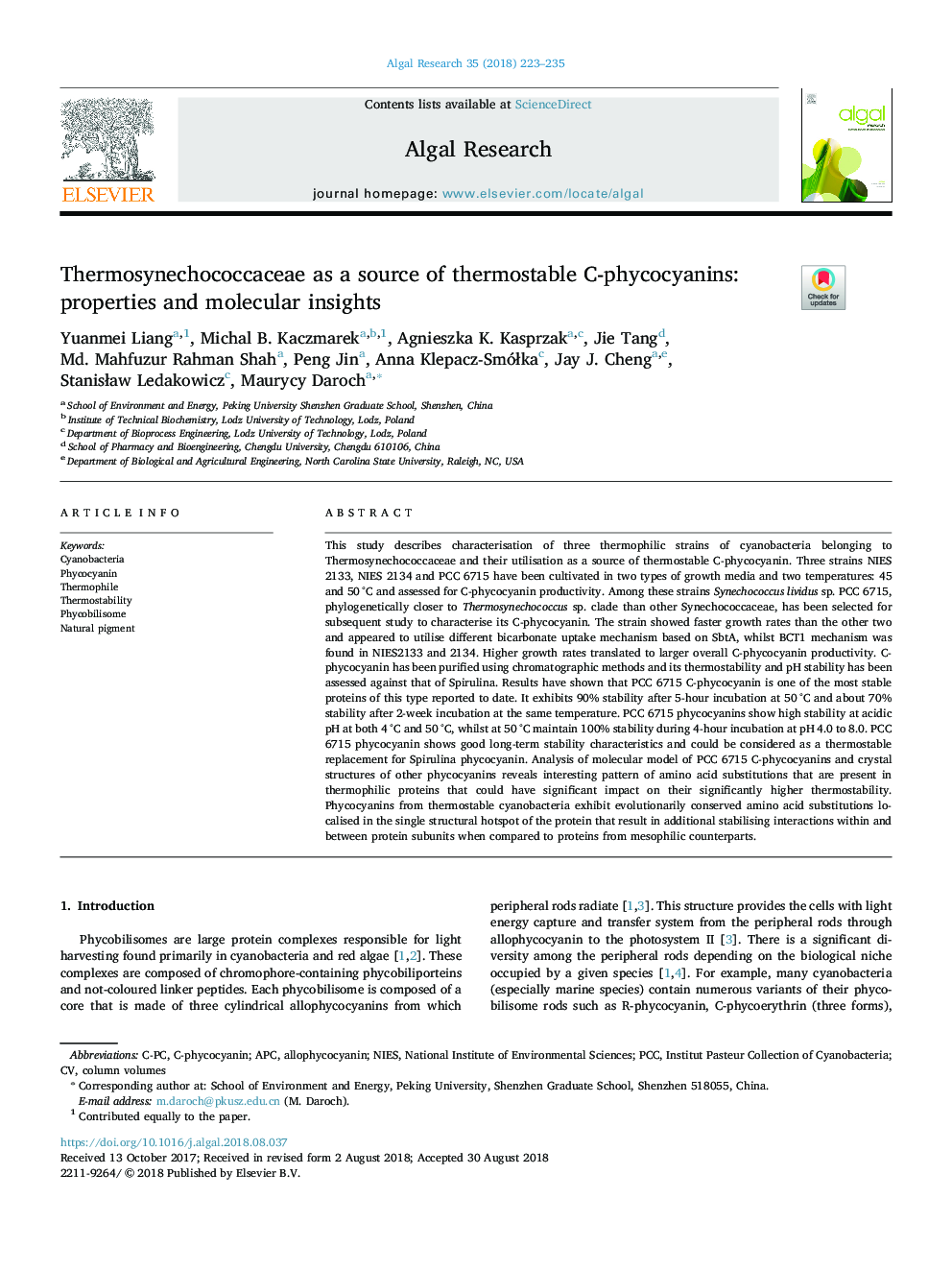| Article ID | Journal | Published Year | Pages | File Type |
|---|---|---|---|---|
| 10128939 | Algal Research | 2018 | 13 Pages |
Abstract
This study describes characterisation of three thermophilic strains of cyanobacteria belonging to Thermosynechococcaceae and their utilisation as a source of thermostable C-phycocyanin. Three strains NIES 2133, NIES 2134 and PCC 6715 have been cultivated in two types of growth media and two temperatures: 45 and 50â¯Â°C and assessed for C-phycocyanin productivity. Among these strains Synechococcus lividus sp. PCC 6715, phylogenetically closer to Thermosynechococcus sp. clade than other Synechococcaceae, has been selected for subsequent study to characterise its C-phycocyanin. The strain showed faster growth rates than the other two and appeared to utilise different bicarbonate uptake mechanism based on SbtA, whilst BCT1 mechanism was found in NIES2133 and 2134. Higher growth rates translated to larger overall C-phycocyanin productivity. C-phycocyanin has been purified using chromatographic methods and its thermostability and pH stability has been assessed against that of Spirulina. Results have shown that PCC 6715 C-phycocyanin is one of the most stable proteins of this type reported to date. It exhibits 90% stability after 5-hour incubation at 50â¯Â°C and about 70% stability after 2-week incubation at the same temperature. PCC 6715 phycocyanins show high stability at acidic pH at both 4â¯Â°C and 50â¯Â°C, whilst at 50â¯Â°C maintain 100% stability during 4-hour incubation at pHâ¯4.0 to 8.0. PCC 6715 phycocyanin shows good long-term stability characteristics and could be considered as a thermostable replacement for Spirulina phycocyanin. Analysis of molecular model of PCC 6715 C-phycocyanins and crystal structures of other phycocyanins reveals interesting pattern of amino acid substitutions that are present in thermophilic proteins that could have significant impact on their significantly higher thermostability. Phycocyanins from thermostable cyanobacteria exhibit evolutionarily conserved amino acid substitutions localised in the single structural hotspot of the protein that result in additional stabilising interactions within and between protein subunits when compared to proteins from mesophilic counterparts.
Keywords
Related Topics
Physical Sciences and Engineering
Energy
Renewable Energy, Sustainability and the Environment
Authors
Yuanmei Liang, Michal B. Kaczmarek, Agnieszka K. Kasprzak, Jie Tang, Md. Mahfuzur Rahman Shah, Peng Jin, Anna Klepacz-SmóÅka, Jay J. Cheng, StanisÅaw Ledakowicz, Maurycy Daroch,
